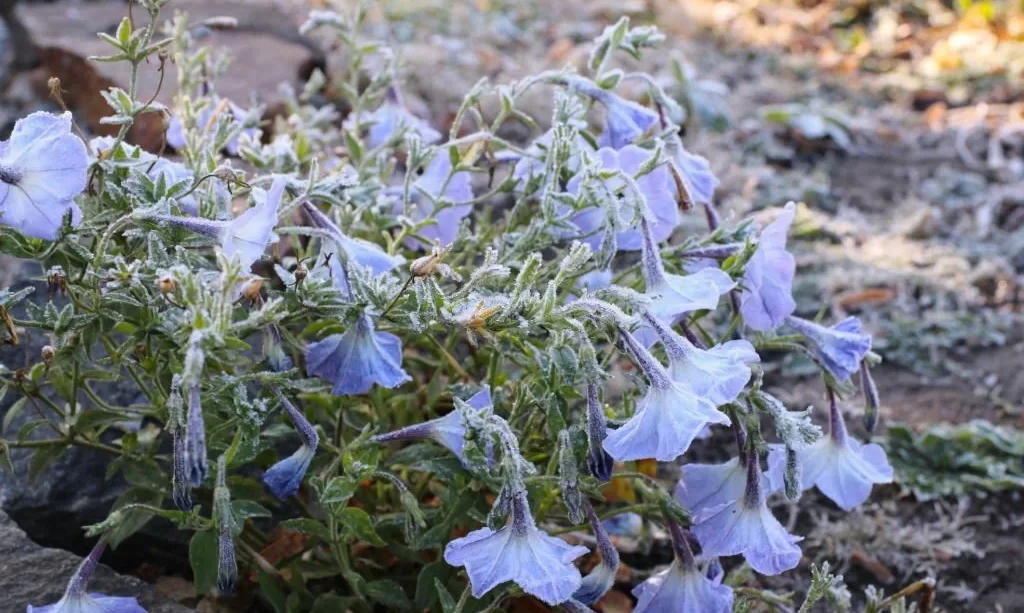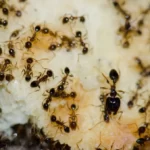The allure of petunias in gardens and landscapes is undeniable. Their vibrant blooms and cascading growth patterns have made them a beloved choice for gardeners around the world. Yet, behind the beauty of these colorful flowers lies a sensitivity to temperature, especially the cold. Understanding how cold petunias can tolerate is essential for keeping these floral treasures thriving.
In this article, we will explore the delicate balance between the chill of winter and the allure of petunias. We’ll begin by delving into the world of petunia varieties and identifying those with cold tolerance. By the end, you’ll be equipped with the knowledge to ensure your petunias survive and flourish in varying temperatures.
- Season: Annual
- Plant Height: 8 in – 10 in
- Bloom Season: Late spring through fall
- Environment: Full sun to partial shade
- Soil Type: Well-drained, pH 5.6 – 6.6
Petunias – The Cold-Tolerant Varieties
Petunias come in a wide array of varieties, each with its own unique characteristics, including cold tolerance. Not all petunias react the same way to cooler temperatures, so selecting the right variety is a crucial first step in helping your petunias withstand the cold.
Cold-Tolerant Varieties: Some petunia varieties are more resilient to chilly weather than others. One standout group is the “Wave” series, known for its hardiness in cooler conditions. These varieties, including “Wave”, “Shock Wave” and “Easy Wave” are designed to withstand mild frosts and cooler temperatures, making them ideal choices for gardens in regions with unpredictable weather.
Multiflora Types: Multiflora petunias are another category to consider. These petunias produce smaller but numerous flowers, and many of them have a higher level of cold tolerance compared to their grandiflora counterparts. Varieties like “Supertunia” and “Sanguna” can endure cooler nights better than some other petunias.
While these cold-tolerant petunias can withstand a bit of chill, it’s important to note that even they have their limits when it comes to freezing temperatures. In the following sections, we will explore the ideal temperature range for petunias and discover how to protect them during colder spells.
- This mesmerising variety performs well in small spaces, producing mounded, well-branched plants, smothered in yellow blooms.
- And it shows good tolerance to rain damage, which is always a bonus! Trailing type.
- Flowers July-September. Height. 17-25cm (7-10″).
Ideal Temperature Range for Petunias
Understanding the temperature range that petunias thrive in is essential for their well-being. While they are known for their ability to withstand a bit of chill, they do have their limits. Let’s explore the ideal temperature range for petunias:
Optimal Temperature: Petunias thrive in temperatures typically ranging from 50°F to 70°F (10°C to 21°C). These moderate temperatures provide the best conditions for their growth and prolific flowering.
Mild Frosts: Petunias can tolerate mild frosts, generally down to around 32°F (0°C). During such conditions, their leaves may become slightly damaged, but the plants can recover once warmer weather returns. However, it’s essential to avoid prolonged exposure to freezing temperatures, as this can cause more severe damage.
Freezing Temperatures: Petunias are not suited for freezing temperatures below 32°F (0°C). Prolonged exposure to freezing conditions can lead to wilting, browning of leaves, and even plant death. It’s crucial to take precautions to protect your petunias when frost or freezing temperatures are expected.
Understanding the temperature range that petunias can tolerate will help you make informed decisions when planting and caring for them. In the next section, we’ll explore practical methods for safeguarding your petunias during cold weather.
Protecting Petunias from Cold
When the thermometer drops and cold weather threatens your petunias, there are several practical methods to shield them from the chill and ensure their survival:
Frost Cloth and Row Covers: Covering your petunias with frost cloth or row covers is one of the most effective ways to protect them from frost. These materials act as insulators, trapping heat around the plants and preventing frost from settling on them. Be sure to secure the covers in place to prevent them from blowing away in the wind.
Move Potted Petunias Indoors: If you have petunias in containers, consider bringing them indoors on exceptionally cold nights or during cold snaps. Place them in a location with adequate light and protection from drafts.
Choose Container Gardens: If you live in an area with particularly harsh winters, consider planting your petunias in containers. This allows you to move them to more sheltered locations when cold weather strikes, ensuring their safety.
Monitor Weather Forecasts: Stay vigilant by keeping an eye on weather forecasts. If frost or freezing temperatures are expected, take proactive measures to protect your petunias, such as covering them or moving them to a warmer spot.
By taking these protective steps, you can help your petunias weather the cold and continue to grace your garden with their vibrant beauty. In the following sections, we’ll explore the benefits of early and late-season planting and discuss essential care and maintenance practices for your petunias.
- ❄️【FULL PROTECTION PLANT COVER】The plant covers freeze protection not only could offer a strong protection from freeze, frost, snowstorm, heavy rain, strong sun lights and other harsh weather, but also could prevent your plants from attacking by birds, pests and insects. Frost cloth plant freeze protection is ideal for extending the growing season into early spring and late and delay the harvest season.
- ❄️【LARGE AREA OF PLANT COVERS FOR WINTER PROTECTION】The frost covers for outdoor plantsis measured to be 10ft ×50ft, compared with other brand, which is a large size to cover a large area. You could cut the frost cloth into different sizes for different use, which is depend on your need. It is convenient to fold and store if not used it .Kindly noticed that please store it away from sun and moisture.
- ❄️【BREATHABLE FROST PLANT COVERS】The row cover is made of superior polypropylene fabric, which is durable and soft enough to protect your plants, its non block fine mesh design could let the plants fully absorb the sunlight, as well as allowing air and moisture to filter through to keep healthy growth of plants.
- ❄️【WIDE APPLICATION】The floating row covers for vegetables frost protection could offer a safety and suitable environment to protect your fruit, grass or other plants growth. Not only could effectively against frost, freeze and other cold weather, but also can protect plants from strong sunlight, insect, pest or birds. Maintain the temperature and humidity of the seeds and facilitate the rapid growth of crops.
- ❄️【HOW TO USE】There are two ways you could to use this frost blankets cover. First, you could put the outdoor plant covers on your plants loosely and directly, and then use soil, stones or staples to fix. Another way, you can also support the winter plant covers with a garden hoops, which could provide enough space for plants to breathe and grow well.
Early and Late Season Planting
The timing of when you plant your petunias can significantly impact their ability to withstand cold temperatures. Early and late-season planting strategies can help you make the most of these beautiful blooms while minimizing their exposure to cold weather:
Early Season Planting: Planting petunias after the last frost date in spring is a reliable way to ensure they have optimal growing conditions. This timing allows your petunias to establish themselves during warmer weather, making them more robust by the time cooler temperatures arrive. Be sure to check your region’s frost dates to determine the right time for early-season planting.
Late Season Planting: Alternatively, you can plant petunias in late summer or early fall to enjoy a second season of blooms before winter sets in. This approach is particularly effective in regions with mild autumns. Late-season planting allows petunias to flourish during the cooler months when they are more cold-resistant and less vulnerable to frost.
By carefully timing your petunia plantings, you can maximize their growth and flowering potential while minimizing exposure to extreme cold. In the following section, we’ll delve into essential care and maintenance practices to keep your petunias healthy and resilient.
Care and Maintenance
Proper care and maintenance play a pivotal role in helping your petunias thrive and become more resilient to cold temperatures. Here are some key practices to keep in mind:
Regular Deadheading: To encourage continuous blooming, make a habit of deadheading your petunias. This involves removing spent flowers promptly. Deadheading not only enhances the appearance of the plant but also redirects its energy toward producing new blooms.
Watering: Adequate watering is crucial for the health of your petunias. Keep the soil consistently moist, but avoid overwatering, as petunias dislike standing in waterlogged soil. Watering in the morning allows excess moisture to evaporate during the day, reducing the risk of fungal issues.
Fertilization: Petunias are heavy feeders, and regular fertilization can boost their growth and resilience. Use a balanced, water-soluble fertilizer every few weeks during the growing season, following package instructions.
Pruning: Occasional light pruning can help shape and rejuvenate your petunias. Trim back leggy or overgrown branches to promote bushier growth.
Pest and Disease Management: Keep an eye out for common pests like aphids and spider mites, as well as fungal diseases. Promptly address any issues to prevent them from weakening your petunias.
By following these care and maintenance practices, you can create an environment where your petunias thrive and become better equipped to withstand cold spells. Finally, let’s conclude our exploration of petunias’ cold tolerance.
Conclusion
In conclusion, petunias, with their vibrant and captivating blooms, bring a burst of color to gardens and landscapes. Understanding their cold tolerance is essential for ensuring their longevity and continued beauty.
Petunias thrive in temperatures ranging from 50°F to 70°F, making them resilient to mild frosts but susceptible to freezing conditions. By choosing cold-tolerant varieties, practicing proper care and maintenance, and utilizing protective measures like frost cloth and row covers, you can extend their blooming season and enjoy their splendor.
Whether you opt for early or late-season planting, the key to petunias’ success lies in providing them with the ideal growing conditions. With attention to detail and a little care, you can create a thriving environment for these charming flowers, enhancing your garden’s charm throughout the seasons.







